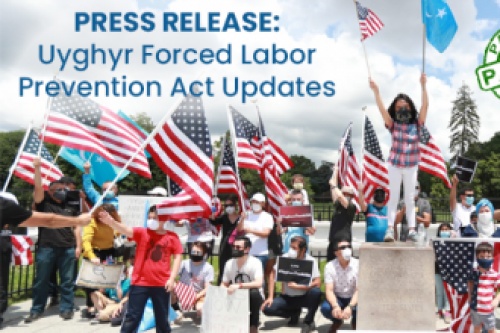The Uyghur Forced Labor Prevention Act (UFLPA) was signed into law on December 23, 2021, and it now creates a “rebuttable presumption” that all items produced in Xinjiang are created using forced labor and are thus prohibited from entering the United States. Most, if not all, businesses will find it challenging to meet the law’s need to “guarantee that items mined, produced, or manufactured fully or in part using forced labor are not imported into the United States” without extensive supplier mapping and due diligence.
Customs and Border Protection (CBP) will begin today to apply the provisions of the Uyghur Forced Labor Prevention Act to restrict the importation of Xinjiang-made items into the United States. With strong bipartisan support in Congress, President Biden signed the Act into law on December 23, 2021, highlighting our commitment to eliminating forced labor across the world, especially in China’s oppressive region of Xinjiang.
Imports from China and others will face additional challenges as a result of the Uyghur Forced Labor Prevention Act‘s high standards and the accompanying documentation and supply chain management requirements. According to the Operational Guidance, CBP believes that the heightened due diligence and supply chain tracing efforts needed by the Uyghur Forced Labor Prevention Act will extend across the importer’s supply chain, including products that may be exported from other locations in China and to other nations for further processing. Importers should constantly refine and analyze supply chain processes and documentation requirements, create solid diligence procedures to stay up with the shifting cross-border regulatory environment, and be ready to overcome the assumption of forced labor since CBP may also examine evidence other than that supplied by the importer when deciding whether there is clear and persuasive evidence.
The Operational Guidance provides a wide variety of insights that might lead to new import practices, but they must be studied and judged depending on the realities of specific firms.









 Trusted Digital Marketing Agency in Faridabad: Fixdot Technologies
Trusted Digital Marketing Agency in Faridabad: Fixdot Technologies


